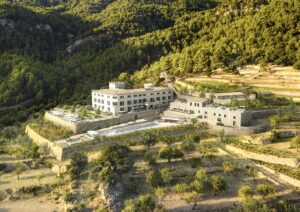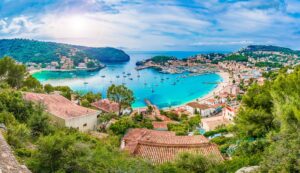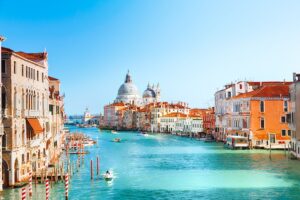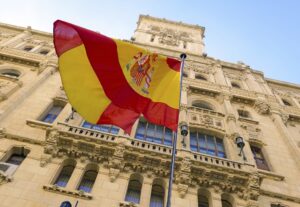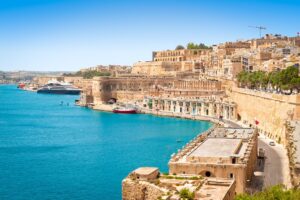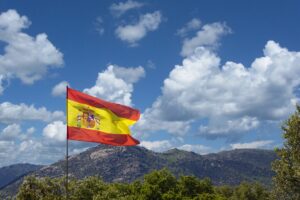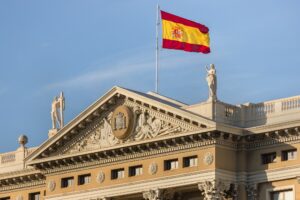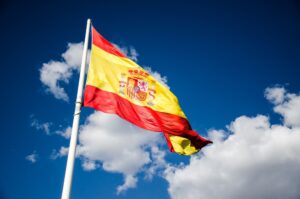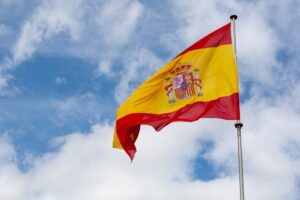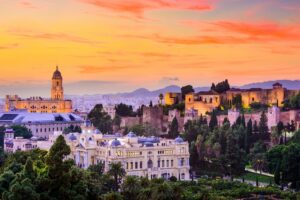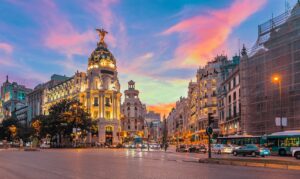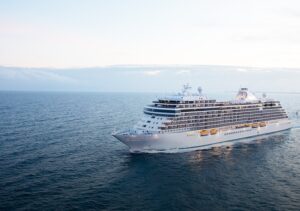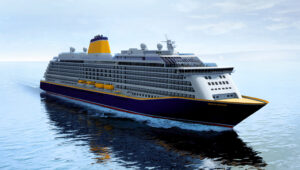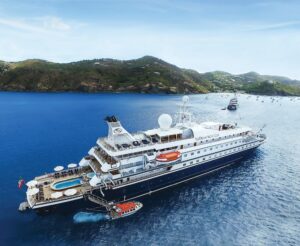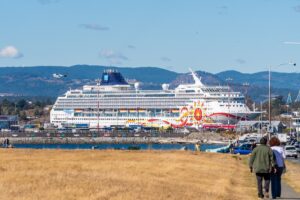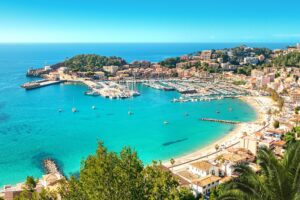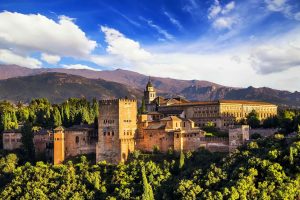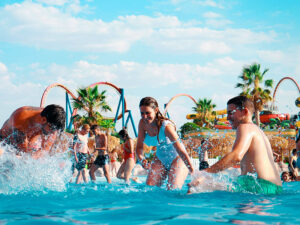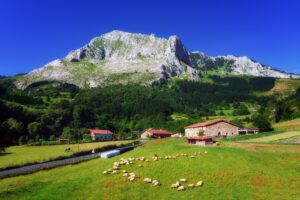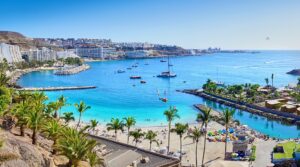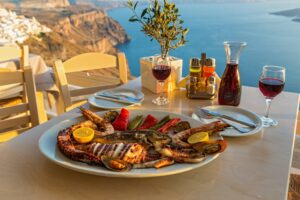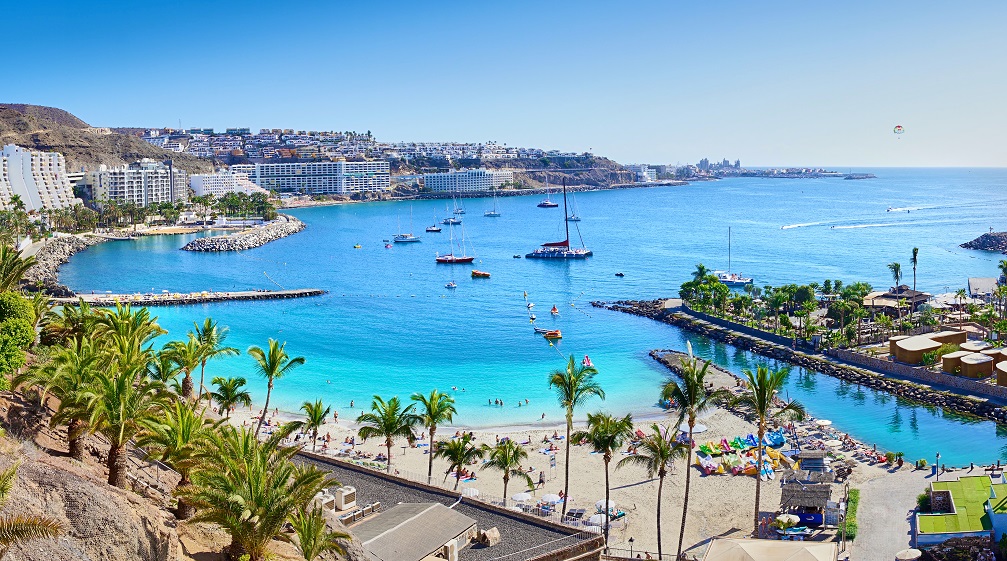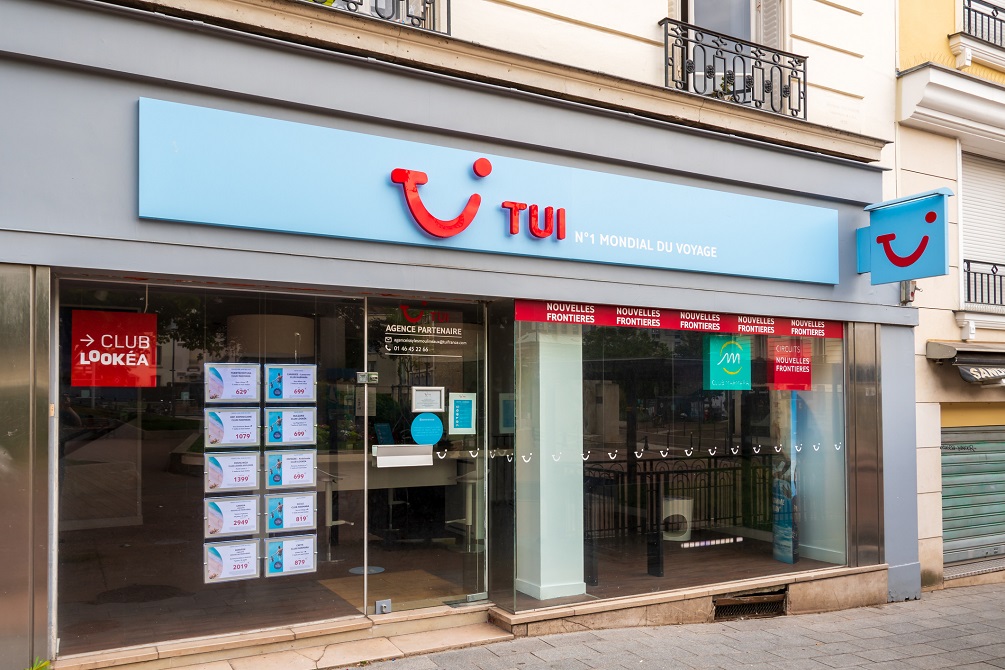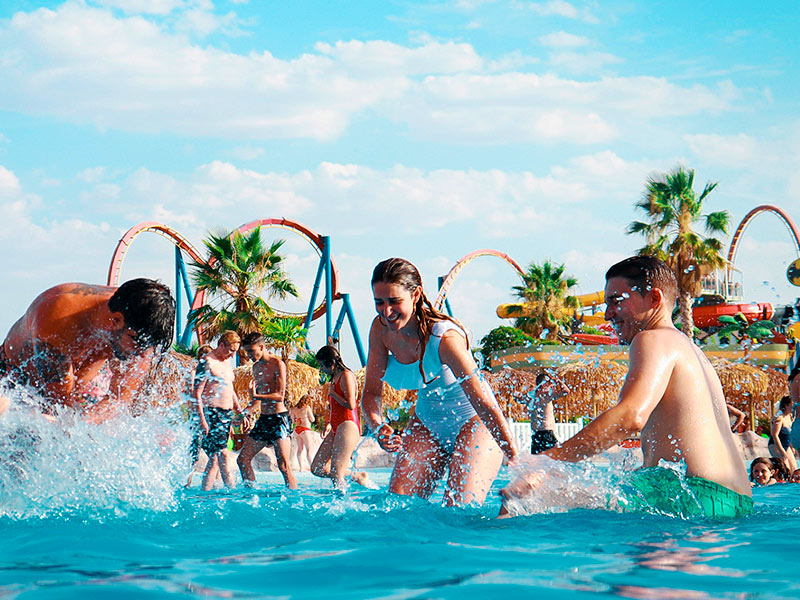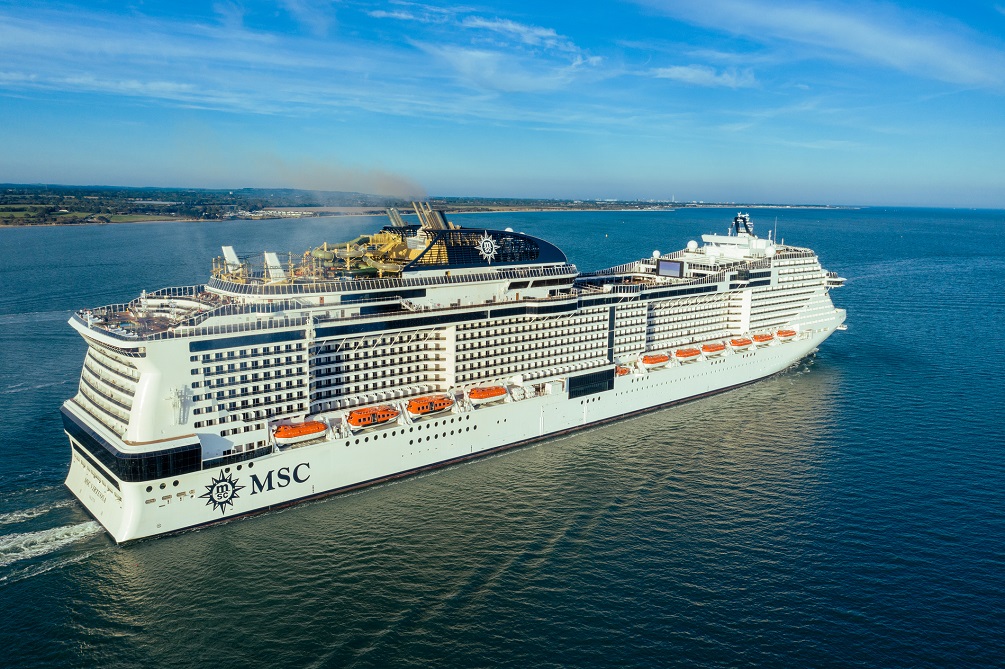Spain
The country where the European culture meets and blends with the Arab world, Spain will mesmerize you with its ancient history, art, and architecture.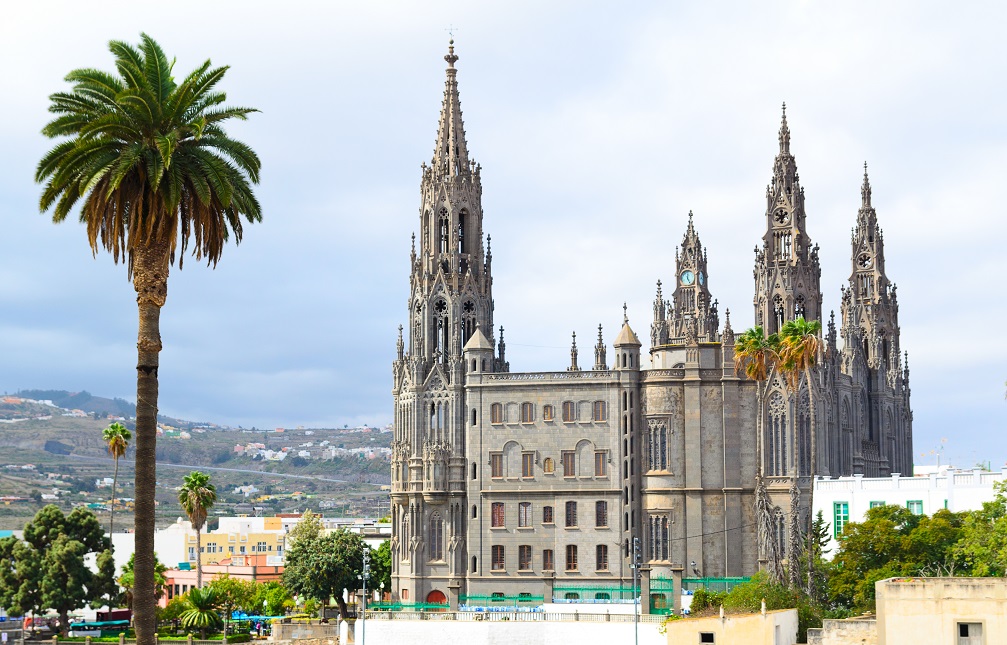
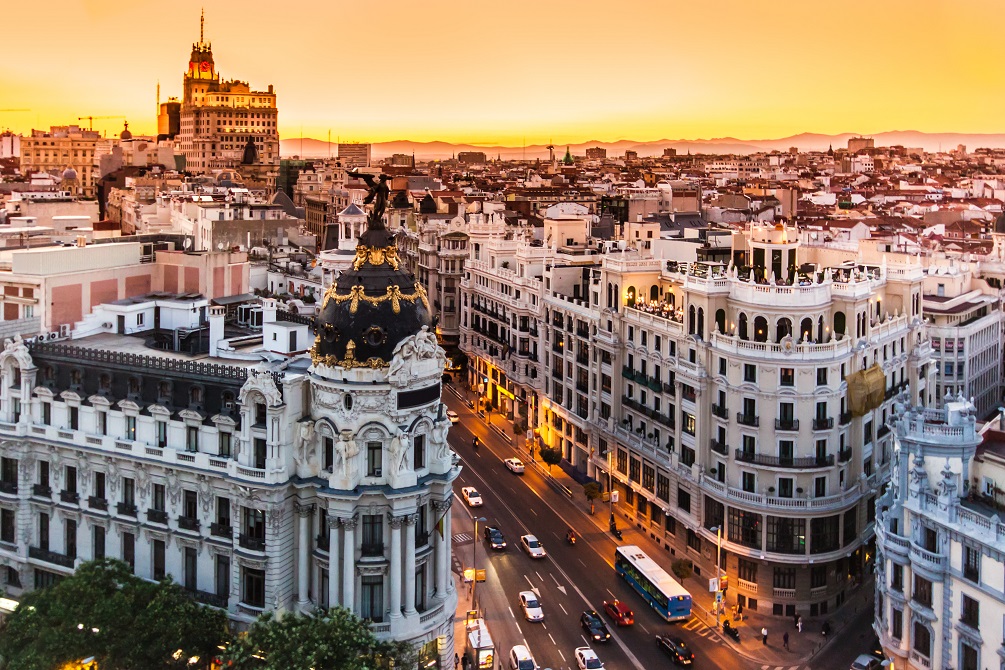


Spain is located in West Europe and specifically in the Iberian peninsula. The capital, Madrid, is situated in the center of the country while the second biggest city, Barcelona, is located on the Mediterranean coast on the East side of Spain. Other interesting but less known cities include Setenil de las Bodegas and Cádiz. The country is mainly mountainous and it hosts six different mountain chains. In the North of Spain, you will find green and wet zones while in the South the landscape gets dryer and arid. Spain is also the only country in Europe with a desert, called the Tabernas desert in Andalusia. The country is home to sixteen national parks and has great biodiversity. Here you will find canyons, caves, and even the popular Rio Tinto, a river famous for its colors ranging from yellow to red.
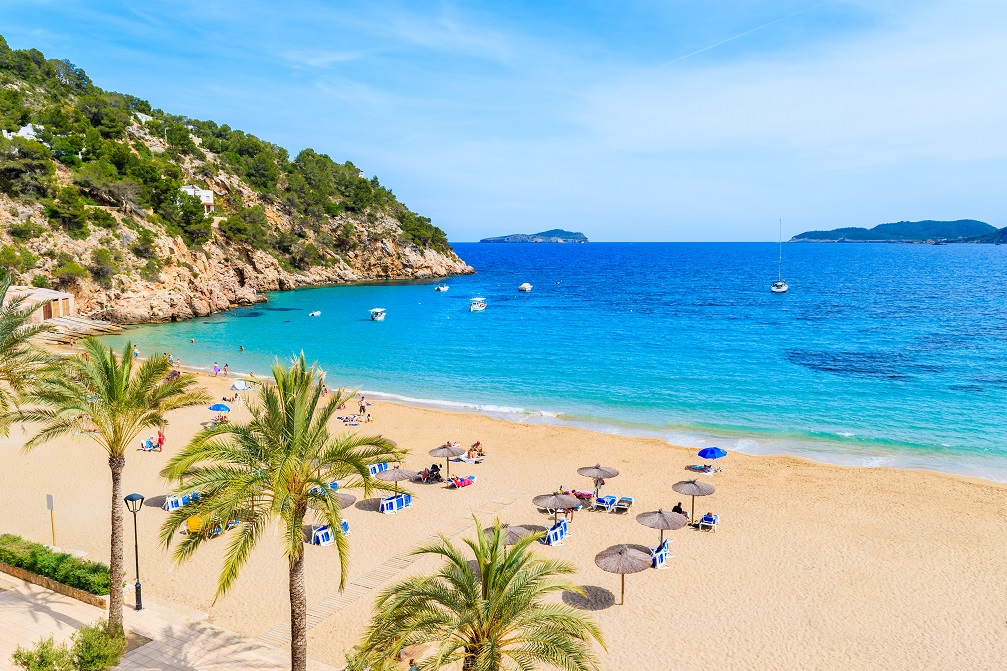


There are three main climates in Spain. The coastline on the Mediterranean Sea is obviously characterized by a Mediterranean climate, with hot summers and mild winters. Inland, the winters get colder, especially on the mountain ranges where you can expect heavy snow during the cold winters, however, summers are still pleasurably warm and dry. Here you can expect precipitations during the spring and autumn months. The North of the country, facing the Atlantic Sea, has a totally different climate. Here winters are snowy and rainy and summers are cool. For this reason, make sure to check the weather of each of the locations that you will be visiting during your trip as the climate varies a lot depending on the area.
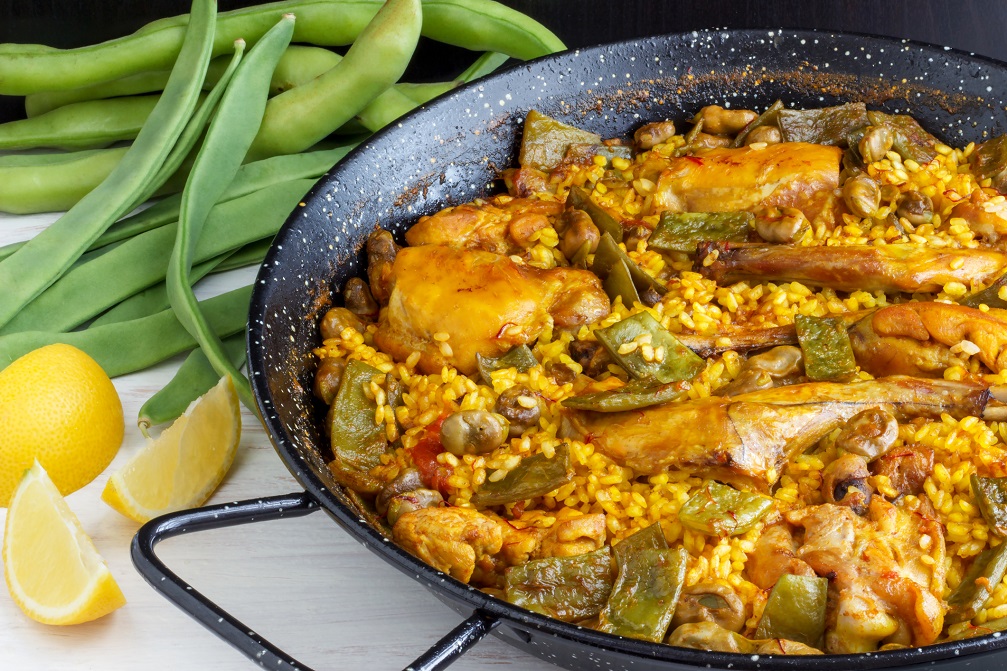


Every area of Spain has its own culinary specialties, so make sure to try the local cuisine wherever you’re going! Eating in Spain is not as easy as in many other countries, as here there is a whole process that must be followed during the day. You normally have breakfast with churros to then move to the aperitivo, a quick snack before lunchtime. After lunch, Spanish people don’t run back to work but keep talking at the table in what they call the sobremesa. You then have a merienda, a quick snack in the afternoon, followed by the final dinner. For sure, everyone will agree that paella is the national dish of the country. If you want to try the original recipe make sure to go to Valencia! Paella is a rice dish cooked with several veggies and either rabbit or chicken. Gazpacho, a cold tomato soup made up by blending raw vegetables, is also popular and perfect during the warm summer days! Spain is the second biggest producer of wine in the world and the first olive oil producer, so make sure to try both these products when visiting!



In Spain presentation matters! You will hardly see people wearing sports clothes outside of the gym or yoga pants. Usually, Spanish people tend to be presentable on all occasions. This doesn’t mean that you will have to wear a suit and a tie every day, but bring nice clothes with you such as a shirt and a good pair of jeans. For girls, a nice colorful dress is always a win!
If you’re visiting Spain during the winter months, obviously depending on the area, instead of bringing with you a heavy coat, opt for layers of clothes such as a t-shirt coupled with a wool sweater and a light jacket. In this way, it will be easier to adapt to the weather changes. A portable umbrella will be your best friend from autumn to spring! If you’re visiting during the summer don’t forget a pair of sunglasses and lots of suncream.
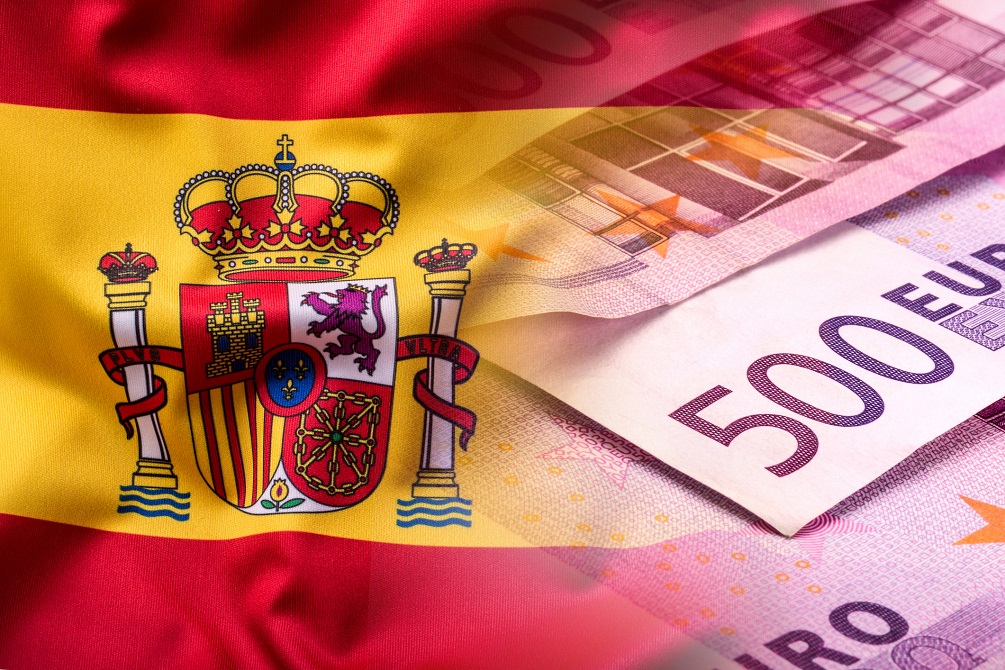


The official currency in Spain is the Euro. Prices tend to be cheaper than other countries in West Europe, but still quite expensive. An Airbnb for two people in Madrid will cost you around 50€ to 60€ while a night in a hostel dormitory will be around 20€. Obviously, Madrid is among the most expensive cities in the country, along with Barcelona, so you can expect to pay less in smaller villages. A day of public transportation will be around 22€ and obviously traveling by taxi will cost you way more. For food, you will spend around 32€ during a normal day.
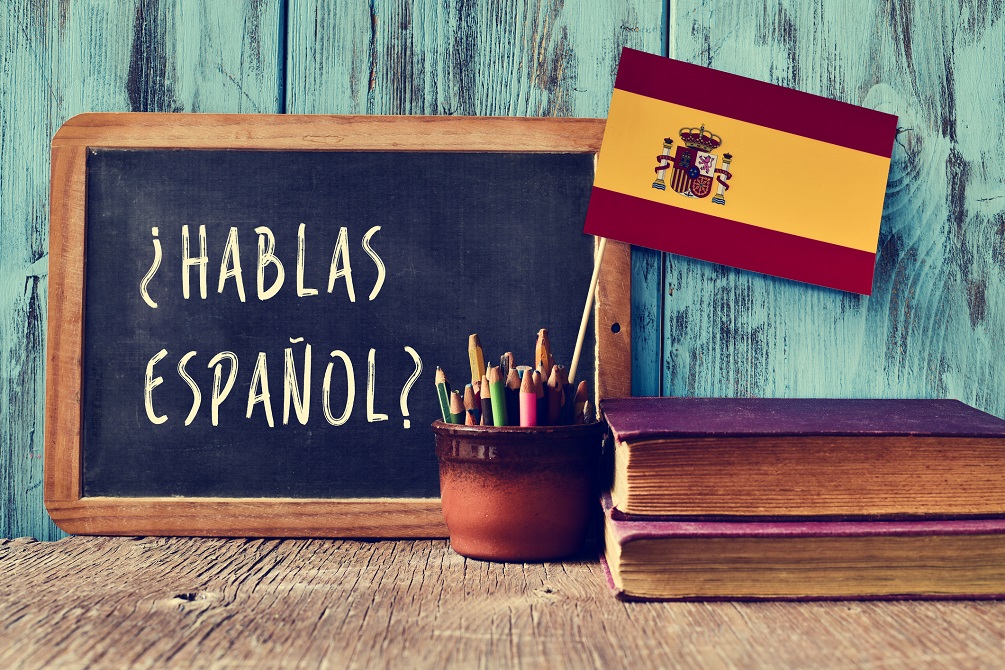


Obviously, Spanish, and in particular Castellano, is the official language of Spain. This is one of the most spoken languages in the world with more than 500 million people speaking it on a daily basis. However, there are three extra co-official languages: Catalan, Galician and Basque. Unlike what many believe, Spanish people are not so good with English. Even though in the most popular cities and tourist sites you will be able to communicate, the majority of the population neither speak nor understand the English language. Especially if you’re traveling to small villages you will have to learn a bit of Spanish in order to be able to communicate. Downloading apps such as Google Translator on your phone will help you a lot!
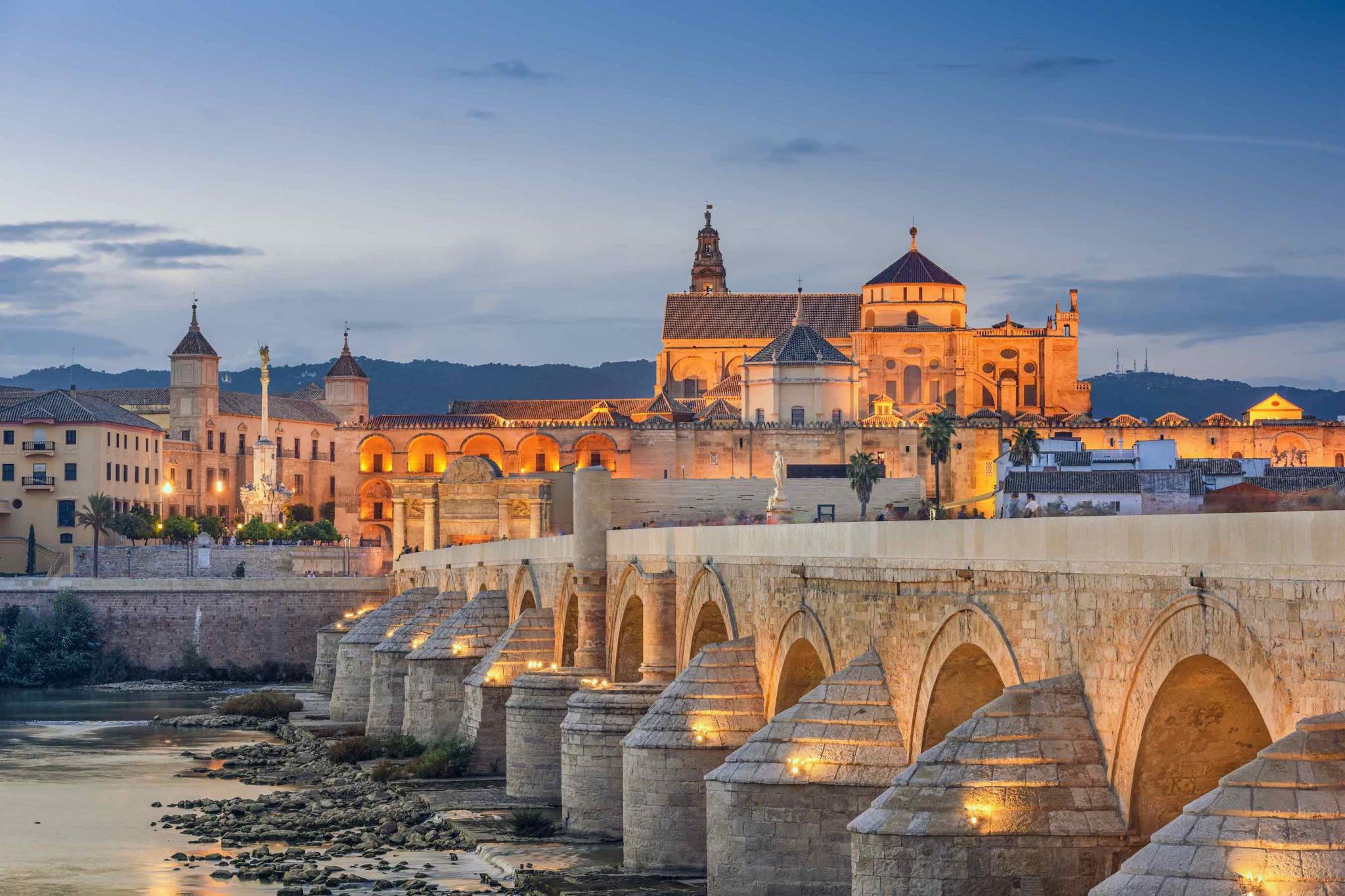


Spain is the third-highest-ranked country for the number of UNESCO world heritage sites in the world. If you love history, you cannot miss the wonderful city of Alhambra or the Mosque-Cathedral of Córdoba. The Arab tradition is particularly strong in Spain, given the close proximity with North Africa, and its influence can be still seen in the architecture as well as in the Spanish language. Obviously, art is another pillar of the country and if you’re visiting Barcelona you cannot miss the wonderful creations of Antoni Gaudí, such as the Sagrada Familia and Park Güell. But Spain is home to many other artists known worldwide such as Picasso, Goya, and Dalí. The most popular sport is obviously football and even though not many people are aware of this Spain also has a great roller hockey team!
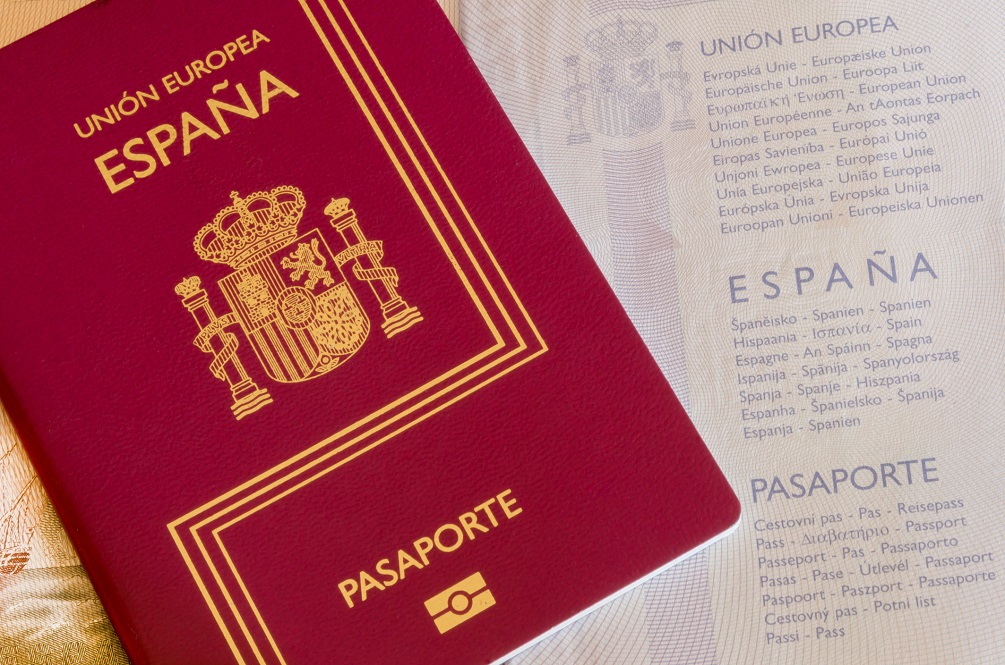


Spain is part of the Schengen area and therefore you won’t need a Visa to enter the country. You will be able to stay in any country in the Schengen area for 90 days in a period of 180 days without applying for a Visa. However, you may be required to use separate lanes from EU, EEA and Swiss passengers. In addition, your passport may be stamped on entry or exit and you may be required to demonstrate that you both have enough money for the trip and a return ticket. Lastly, make sure to check your passport as you need a validity of six months on the day of entry.
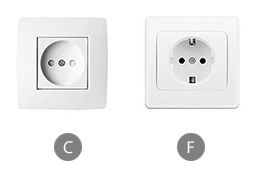


Spain has two official associated plug types: type C and type F. The former is characterized by two round pins while the latter has two round pins plus two earth clips. Spain operates on a standard frequency of 50Hz and 230V supply voltage.






Spain is located in West Europe and specifically in the Iberian peninsula. The capital, Madrid, is situated in the center of the country while the second biggest city, Barcelona, is located on the Mediterranean coast on the East side of Spain. Other interesting but less known cities include Setenil de las Bodegas and Cádiz. The country is mainly mountainous and it hosts six different mountain chains. In the North of Spain, you will find green and wet zones while in the South the landscape gets dryer and arid. Spain is also the only country in Europe with a desert, called the Tabernas desert in Andalusia. The country is home to sixteen national parks and has great biodiversity. Here you will find canyons, caves, and even the popular Rio Tinto, a river famous for its colors ranging from yellow to red.



There are three main climates in Spain. The coastline on the Mediterranean Sea is obviously characterized by a Mediterranean climate, with hot summers and mild winters. Inland, the winters get colder, especially on the mountain ranges where you can expect heavy snow during the cold winters, however, summers are still pleasurably warm and dry. Here you can expect precipitations during the spring and autumn months. The North of the country, facing the Atlantic Sea, has a totally different climate. Here winters are snowy and rainy and summers are cool. For this reason, make sure to check the weather of each of the locations that you will be visiting during your trip as the climate varies a lot depending on the area.



Every area of Spain has its own culinary specialties, so make sure to try the local cuisine wherever you’re going! Eating in Spain is not as easy as in many other countries, as here there is a whole process that must be followed during the day. You normally have breakfast with churros to then move to the aperitivo, a quick snack before lunchtime. After lunch, Spanish people don’t run back to work but keep talking at the table in what they call the sobremesa. You then have a merienda, a quick snack in the afternoon, followed by the final dinner. For sure, everyone will agree that paella is the national dish of the country. If you want to try the original recipe make sure to go to Valencia! Paella is a rice dish cooked with several veggies and either rabbit or chicken. Gazpacho, a cold tomato soup made up by blending raw vegetables, is also popular and perfect during the warm summer days! Spain is the second biggest producer of wine in the world and the first olive oil producer, so make sure to try both these products when visiting!



In Spain presentation matters! You will hardly see people wearing sports clothes outside of the gym or yoga pants. Usually, Spanish people tend to be presentable on all occasions. This doesn’t mean that you will have to wear a suit and a tie every day, but bring nice clothes with you such as a shirt and a good pair of jeans. For girls, a nice colorful dress is always a win!
If you’re visiting Spain during the winter months, obviously depending on the area, instead of bringing with you a heavy coat, opt for layers of clothes such as a t-shirt coupled with a wool sweater and a light jacket. In this way, it will be easier to adapt to the weather changes. A portable umbrella will be your best friend from autumn to spring! If you’re visiting during the summer don’t forget a pair of sunglasses and lots of suncream.



The official currency in Spain is the Euro. Prices tend to be cheaper than other countries in West Europe, but still quite expensive. An Airbnb for two people in Madrid will cost you around 50€ to 60€ while a night in a hostel dormitory will be around 20€. Obviously, Madrid is among the most expensive cities in the country, along with Barcelona, so you can expect to pay less in smaller villages. A day of public transportation will be around 22€ and obviously traveling by taxi will cost you way more. For food, you will spend around 32€ during a normal day.



Obviously, Spanish, and in particular Castellano, is the official language of Spain. This is one of the most spoken languages in the world with more than 500 million people speaking it on a daily basis. However, there are three extra co-official languages: Catalan, Galician and Basque. Unlike what many believe, Spanish people are not so good with English. Even though in the most popular cities and tourist sites you will be able to communicate, the majority of the population neither speak nor understand the English language. Especially if you’re traveling to small villages you will have to learn a bit of Spanish in order to be able to communicate. Downloading apps such as Google Translator on your phone will help you a lot!



Spain is the third-highest-ranked country for the number of UNESCO world heritage sites in the world. If you love history, you cannot miss the wonderful city of Alhambra or the Mosque-Cathedral of Córdoba. The Arab tradition is particularly strong in Spain, given the close proximity with North Africa, and its influence can be still seen in the architecture as well as in the Spanish language. Obviously, art is another pillar of the country and if you’re visiting Barcelona you cannot miss the wonderful creations of Antoni Gaudí, such as the Sagrada Familia and Park Güell. But Spain is home to many other artists known worldwide such as Picasso, Goya, and Dalí. The most popular sport is obviously football and even though not many people are aware of this Spain also has a great roller hockey team!



Spain is part of the Schengen area and therefore you won’t need a Visa to enter the country. You will be able to stay in any country in the Schengen area for 90 days in a period of 180 days without applying for a Visa. However, you may be required to use separate lanes from EU, EEA and Swiss passengers. In addition, your passport may be stamped on entry or exit and you may be required to demonstrate that you both have enough money for the trip and a return ticket. Lastly, make sure to check your passport as you need a validity of six months on the day of entry.



Spain has two official associated plug types: type C and type F. The former is characterized by two round pins while the latter has two round pins plus two earth clips. Spain operates on a standard frequency of 50Hz and 230V supply voltage.
Destinations in Spain
Travel related news, information and inspirational articles and videos for travellers booking flights or holidays to Spain. Ask questions about travel in Spain and get answers from Spain experts
NEWS
28th January 2023
17th January 2023
4th January 2023
29th November 2022
26th October 2022
7th September 2022
1st April 2022
2nd March 2022
17th February 2022
25th October 2021
21st June 2021
17th June 2021
19th September 2022
26th May 2022
19th May 2022
16th May 2022
5th May 2022
22nd April 2022
7th April 2022
2nd March 2022
29th March 2023
16th February 2023
11th January 2023
6th December 2022
19th August 2022
21st December 2021
16th December 2021
12th October 2021
25th June 2021
21st June 2021
29th March 2023
26th May 2022
19th May 2022
16th May 2022
5th May 2022
22nd April 2022
7th April 2022
2nd March 2022
19th September 2022
26th May 2022
19th May 2022
5th May 2022
22nd April 2022
7th April 2022
2nd March 2022
11th February 2022
29th March 2023
29th June 2022
17th December 2021
Inspiration, Information and Travel Guides
21st June 2022
7min. read
20th November 2021
9min. read
1st November 2021
6min. read
29th July 2021
6min. read
23rd July 2021
8min. read
20th July 2021
7min. read
13th July 2021
10min. read
25th June 2021
9min. read
1st November 2021
6min. read
25th June 2021
9min. read
20th November 2021
9min. read
1st November 2021
6min. read
29th July 2021
6min. read
20th July 2021
7min. read
25th June 2021
9min. read
20th November 2021
9min. read
1st November 2021
6min. read
29th July 2021
6min. read
20th July 2021
7min. read
25th June 2021
9min. read
1st November 2021
6min. read
13th July 2021
10min. read
25th June 2021
9min. read
20th November 2021
9min. read
29th July 2021
6min. read
20th July 2021
7min. read
13th July 2021
10min. read
4th June 2021
9min. read
19th April 2021
8min. read
20th November 2021
9min. read
21st June 2022
7min. read
20th July 2021
7min. read
21st June 2022
7min. read
23rd July 2021
8min. read
21st June 2022
7min. read
1st November 2021
6min. read
13th July 2021
10min. read
13th July 2021
10min. read
20th November 2021
9min. read
20th July 2021
7min. read
MEET THE Spain EXPERTS
If you are looking to book a holiday to Spain or needs some help and advice planning travel to Spain then contact one of the UK based independent travel agents that specialise in Spain itineraries.


Ian Robinson
Westhoughton, Bolton, Greater Manchester
Exclusive Travel Holidays
0161 327 1707
ian@exclusivetravel.holiday
Specialist Area:
Cruise, Weddings and Honeymoon, All Inclusive, City Breaks, Cycling, Diving and Snorkeling, Hiking, Safari
FEATURED VIDEOS
No Featured Videos Found.
Your Travel Questions Answered
Ask any travel related question and get an answer from one of our experts that will provide you with an answer from their personal experience
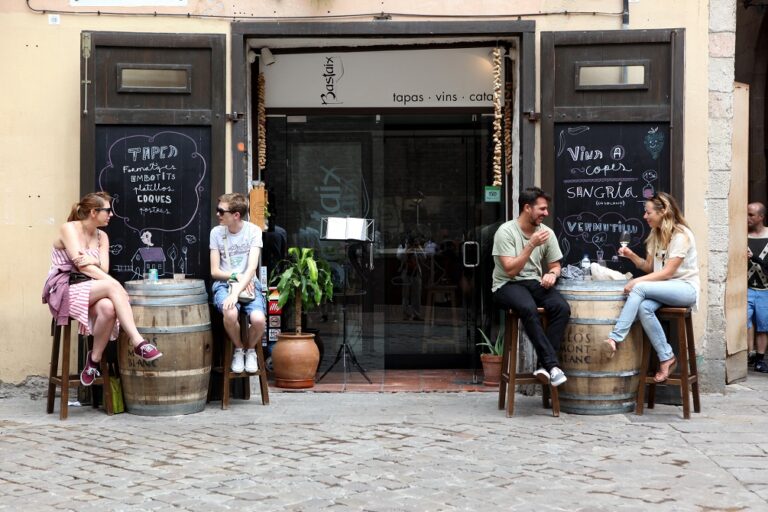

The difference in rate for a room-only hotel in Barcelona and one that includes breakfast seems to range from a minimum of £15 to over £40 per person per night. I would prefer to book a room only and go out into the city for breakfast. What are the breakfast choices in Barcelona?
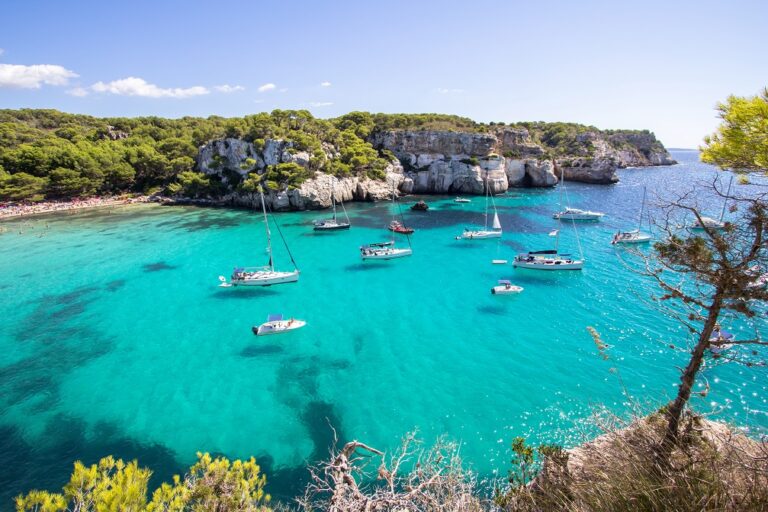

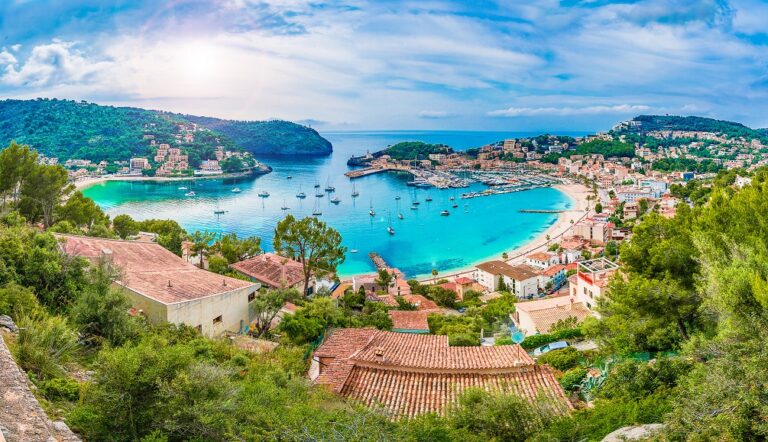

I and my 2 other friends have booked a holiday in a hotel in Majorca in September. How much can I expect to pay in hotel tax when visiting Majorca (Mallorca)?
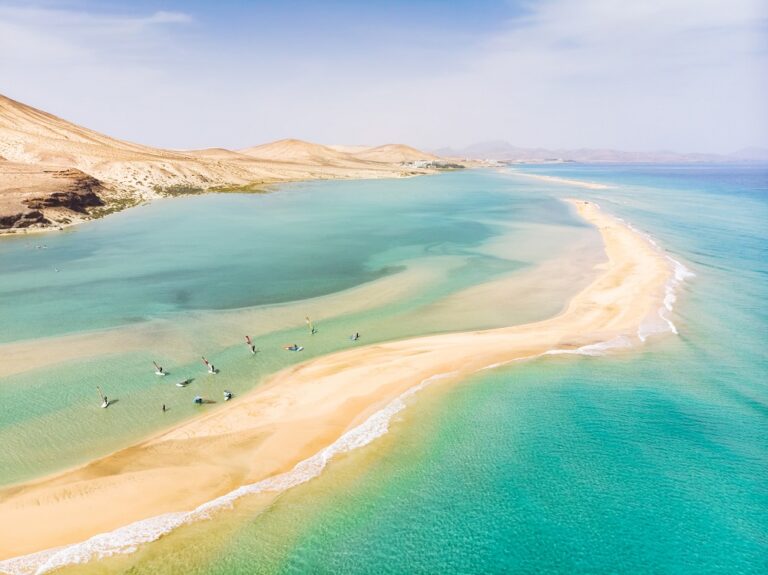

My husband and I are visiting Fuerteventura this Autumn. We’re booked to stay at the Barceló Fuerteventura Thalasso Spa in Caleta de Fuste. We were hoping to see Jandia during our trip. Is it possible to visit Jandia on a day trip? What is the best way to go about this?
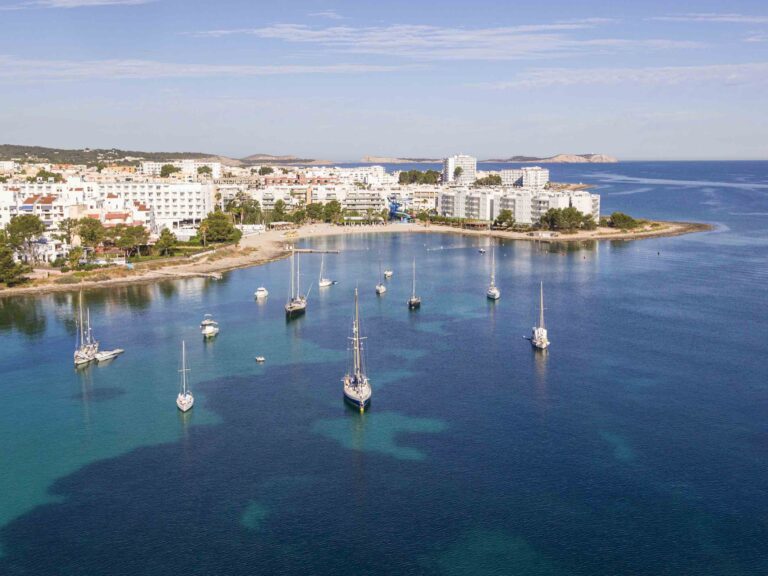

We’ve recently booked flights to Ibiza! After a bit of research, I’m worried about the amount of nightlife on the island. I don’t want this to ruin our family trip. Where is the best area to stay?
EVENTS IN THE Spain
26th May 2022
min. read
Modal title
SIGN UP FOR OUR MAILING LIST
Enter your email address and receive daily or weekly updates with the latest articles, news and videos.Copyright © 2021 Experienced Travellers Ltd. Experienced Travellers Ltd is not responsible for the content of external sites. Read about our approach external linking.



